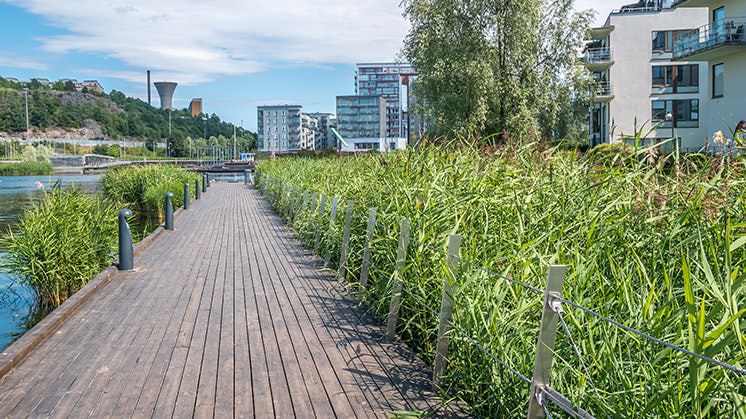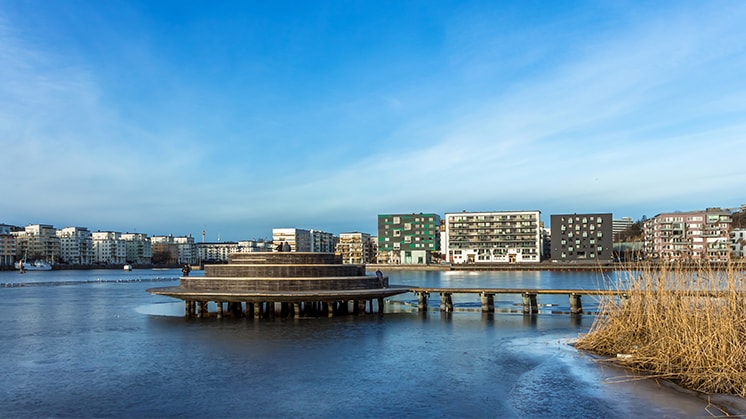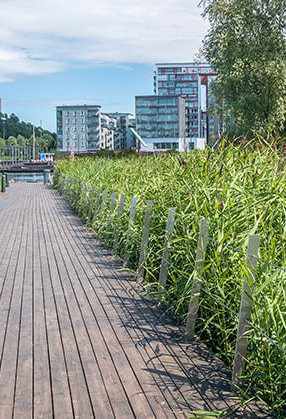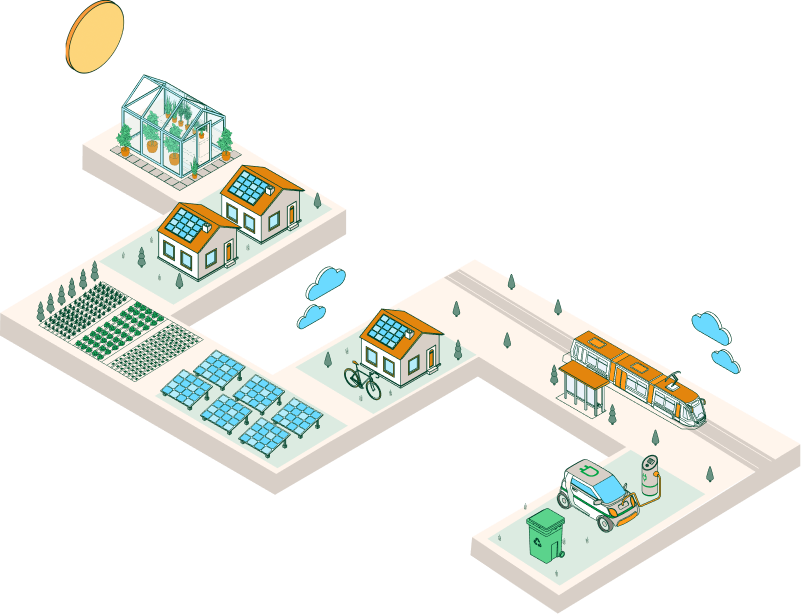Sustainable development in cities
Eco-neighbourhoods: the future of sustainable cities
Environmentally conscious citizens, urban planners and architects are pinning their hopes on eco-neighbourhoods. Efficent and highly environmentally friendly, they are already emerging in major cities.

What is an eco-neighbourhood?
It is an urban project that aims to reduce the impact on the environment and change the education and living habits of the citizens of large cities to make them more responsible with their environment.
This example of small-scale sustainable urbanism is based on energy efficiency and self-sufficiency through the integration of organic farming, renewable energies and the sustainable use of natural resources. And all this while maintaining good communication with the rest of the city.
Among its main benefits are:
- Improved quality of life
- Regeneration of green areas, traffic areas and public spaces
- Promotion of environmental education and awareness
Towards a new model of sustainable urbanism
The eco-neighbourhood is the model of sustainable urban development that best responds to the current needs of society and the environment. It is therefore the most effective solution to the problems of the traditional neighbourhood: non-inclusive, with excessive traffic and high pollution. According to the United Nations (UN), although cities occupy only 3% of the earth's surface, they consume 60% of resources, account for 70% of carbon emissions and, in addition, more than 50% of the population lives in them.
Sustainable development
Eco-neighbourhoods, in the cities of the future
 SEE INFOGRAPHIC: Sustainable development eco-neighbourhoods in the cities of the future [PDF] External link, opens in new window.
SEE INFOGRAPHIC: Sustainable development eco-neighbourhoods in the cities of the future [PDF] External link, opens in new window.
To redirect the situation, the UN has setSustainable Development Goal 11 to "make cities and human settlements inclusive, safe, resilient and sustainable". The goal for 2030 is to reduce negative environmental impacts, while also supporting access to green spaces and aiming to increase access to safe, affordable, accesible and sustainable transport systems.
Eco-neighbourhoods driving sustainability
Hammarby Sjöstad (Stockholm, Sweden)
An industrial neighbourhood abandoned due to pollution before the 1990s won its city the title of Green Capital of Europe in 2010. One of the strategies for its transformation was to create a closed urban metabolism loop with sustainable water, waste and energy systems. The tram, the main means of transport, coexists with a pedestrian and bicycle network, a car-sharing system and a ferry. The height of the buildings also allows for interior courtyards that facilitate the cultivation of plots of land with micro-greenhouses.
BedZED (London, United Kingdom)
In 2000, construction began on the Beddington Zero Energy Development with housing that uses exclusively renewable energies. With an area of 3,000 m2 it stands out for tits rainwater harvesting techniques. These, together with the use of efficient appliances, have reduced water use by 60% compared to the rest of the country. The community promotes everything from car sharing between neighbours to the installation of electric car changes in each house.
Puente de Vallecas eco-neighbourhood (Madrid, Spain)
The neighbourhoods of San Francisco Javier and Nuestra Señora de los Ángeles will be part of the Puente de Vallecas eco-neighbourhood, which has been a project since 2006. However, in recent years the idea has been revived and 441 of the 1,200 dwellings have already been allocated, all of which are social housing and the pneumatic waste collection system has already been developed, making it possible to completely eliminate the existence of the classic containers in the street.
La Pinada (Paterna, Valencia, Spain)
Will be one of the first eco-neighbourhood in Spain, co-designed by its future inhabitants around the Imagine Montessori School. The school will be the centre of life in the neighbourhood and an extension of the education process in the values of social and environmental sensitivity, sustainability, innovation and community; a space where integrating work and leisure will be easier in order to favour work and family reconciliation and reduce commuting.
The project will be located 10 minutes from Valencia and include 25 hectares to house around 1,000 families.
Grow Community, Bainbridge Island (Washington, United States)
The most resilient and sustainable American community in the country lives in zero-emission homes — self-powered by solar energy — surrounded by community gardens and rides in shared electric cars. It is the first eco-neighbourhood to meet the strict requirements of the One Planet Living programme.
Northwest area (Brasilia, Brazil)
A perfect convergene of prime location, environmental sustainability and technological innovation. Part of the Brasilia Revisited project, it was designed by urban planner Lúcio Costa between 1985 and 1987, and was conceived to be the first ecological neighbourhood in Brazil. The residential areas are strategically arranged to make the best use of natural light and ventilation. They also have a solar heating system that reduces electricity consumption, and a selective waste collection and treatment system.


What is energy efficiency?
The benefits of an efficient energy management

Water usage
We ensure water is used in accordance with the best practises
Circular economy model at the Iberdrola Group
At Iberdrola, we work to be more respectful of nature in our three strategic sustainability areas: climate action, biodiversity protection, and circular economy.
For this reason, our sustainable business model is based on the circular economy model, a system for making the most of resources in which priority is given to reducing the use of new raw materials through efficiency in processes, product life extensions, and a firm commitment to the reuse and recycling of materials.






